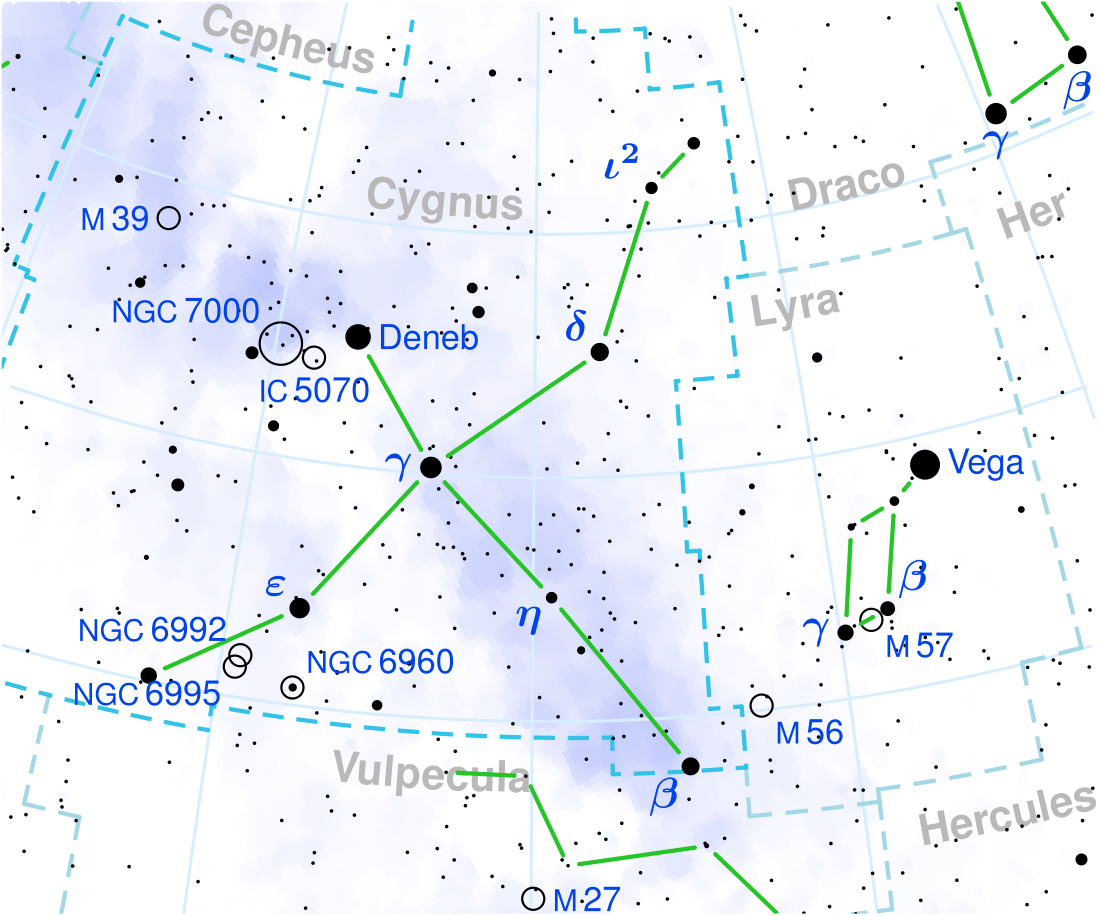Top Qs
Timeline
Chat
Perspective
31 Cygni
Triple star system in the constellation Cygnus From Wikipedia, the free encyclopedia
Remove ads
31 Cygni, also known as ο1 Cygni, Omicron1 Cygni, ο2 Cygni or V695 Cygni, is a ternary star system about 750 light years away in the constellation Cygnus.

The Bayer designation ο (omicron) has been variously applied to two or three of the stars 30, 31, and 32 Cygni. 31 Cygni has been designated, variously, as ο1 or ο2 Cygni — therefore for clarity, it is preferred to use the Flamsteed designation 31 Cygni.[14]
31 Cygni consists of a visible pair of stars 109″ apart as of 2016, and the brighter of the two is also a spectroscopic binary. 31 Cygni A is also designated HD 192577 and HR 7735, while its 7th-magnitude visual companion is designated HD 192579. Some multiple star catalogues designate a 13th-magnitude star 36″ from 31 Cygni A as 31 Cygni B, and HD 192579 as 31 Cygni C.[15] The 13th-magnitude star is likely to be an unrelated background object.[16]
The spectroscopic pair are an orange supergiant of spectral type K3Ib and a blue-white star likely to be evolving off the main sequence with a spectral type of B2IV-V. The visible companion is a 7th-magnitude B5 main sequence star.[4][3]

31 Cygni A is an Algol-type eclipsing binary and ranges between magnitudes 3.73 and 3.89 over a period of ten years.[8] The eclipsing system has been studied in attempts to determine an accurate direct mass for a red supergiant. The value 6.73 M☉ is believed to be accurate to about 2%, but there are some discrepancies in the orbital fit.[9]
30 Cygni is another naked eye star a tenth of a degree away, forming a bright triple.
32 Cygni is about a degree away to the north, also a detached eclipsing binary system. It comprises a large cool evolved star and a small hot main sequence or subgiant companion.
Remove ads
Notes
References
Wikiwand - on
Seamless Wikipedia browsing. On steroids.
Remove ads

